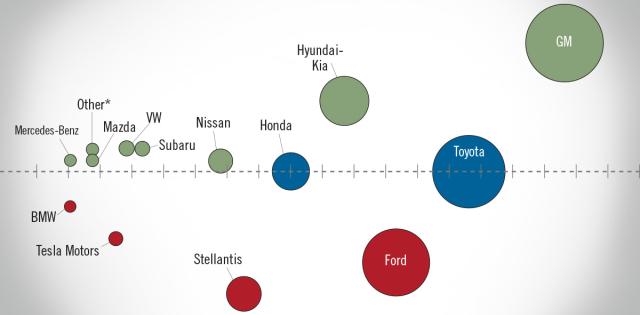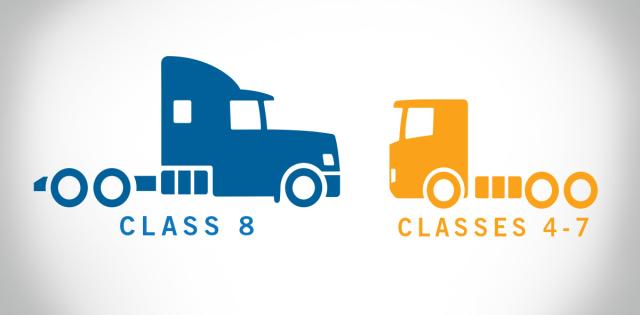Congress first created the Employee Retention Tax Credit (ERTC) in March 2020 to provide financial relief to small businesses during the pandemic. Originally, eligible employers had to choose between taking an SBA-backed Paycheck Protection Program (PPP) loan or the ERTC. Consequently, only a small number of dealerships considered the ERTC at first.
However, Congress subsequently amended and expanded the ERTC twice – in December 2020 as part of the Taxpayer Certainty and Disaster Tax Relief Act and in March 2021 as part of the American Rescue Plan Act. Those legislative changes enabled more employers to take advantage of the credit and clarified that they may be eligible for both forgivable PPP loans and ERTCs.
Here are some key facts about the ERTC and its potential benefits.
What is the Employee Retention Tax Credit?
The ERTC is a credit against certain employment taxes for eligible employers that were shut down due to COVID-19 or that had business reductions in 2020 or 2021. Eligible employers could qualify for up to $5,000 per employee for 2020. Originally, eligible employers could receive as much as $7,000 per employee per quarter for up to four quarters in 2021. But the Infrastructure Investment and Jobs Act, signed into law by President Biden on November 15, 2021, limited the ERTC’s potential application to the first three quarters of 2021, for a maximum of $21,000 per employee.
Because it has changed over time, the ERTC can be tricky.
Which Businesses Qualify for an ERTC?
The ERTC requires employers to meet certain eligibility requirements. Specifically, an employer may be eligible for an ERTC if its business was fully or partially suspended by a COVID-19 related government order; or
-
For 2020, its gross receipts fell by 50% or more versus the comparable quarter in 2019. When an employer’s gross receipts rose above 80% or more versus a comparable quarter in 2019, it did not qualify for an ERTC for that quarter.
-
For 2021, its gross receipts for the current or preceding quarter are below 80% of the comparable quarter in 2019. When an employer’s gross receipts go above 80% of the comparable quarter, it will not qualify for an ERTC in the next quarter.
An employer looking to qualify for an ERTC by showing that its business was fully or partially suspended by a COVID-19 related government order should obtain and maintain documentation of the specific government order which either 1) suspended its business operations directly, or 2) caused its supplier to suspend its operations and prevented the supplier from delivering critical goods to the business. On October 19, 2022, the IRS issued guidance on the importance of consulting with competent tax counsel when evaluating the potential applicability of the credit. Among other things, that guidance emphasized that government orders must be from the federal government or the employer’s state or local government. (See IRS Notice 2021-20, particularly Q&As 10 and 12).The guidance also warned businesses to be wary of companies advising them to claim the ERTC when they may not qualify for the credit.
The IRS issued a renewed warning in March 2023 in response to the continued efforts of certain promoters to push ineligible businesses to claim the ERTC, followed by guidance for CPAs regarding their professional responsibility obligations in connection with claims for the ERTC.
To further stress the strict requirements for claiming the credit, the IRS released a Generic Legal Advice Memorandum (GLAM) in June 2023. The GLAM addresses ERTC claims based on a full or partial suspension of business operations related to supply chain disruptions by describing several scenarios that do not satisfy the eligibility requirements. Its analysis specifies that, to claim the ERTC based on a shutdown relating to a supplier’s inability to deliver critical goods and materials, a taxpayer must show that a qualifying governmental order caused the supplier and the taxpayer to suspend their business operations.
The GLAM makes clear that the IRS takes a strict view on ERTC claims and IRS Commissioner Danny Werfel reiterated this message recently, noting that the IRS is working aggressively to address a flood of fraudulent and erroneous ERTC claims. In addition, the IRS announced an immediate moratorium on the processing of new ERTC claims to protect honest small business owners from scams. The agency will continue to process returns with ERTC claims that were received prior to the moratorium, but is slowing the processing and increasing the scrutiny of those returns, and will begin scheduling interviews with taxpayers who claim the credit. The IRS further encouraged taxpayers with pending ERTC claims to review their returns with a tax advisor and withdraw their ERTC claim if they believe it was submitted improperly. The IRS will also provide details this fall on a settlement program for businesses with already processed ERTC claims that are now believed to be improper to allow them to repay ERTC claims to avoid penalties and future compliance action.
If not based on a reduction in revenue below a certain threshold, a dealer’s eligibility for the ERTC is highly questionable and several CPAs have expressed concern to Regulatory Affairs about the exposure of dealers who erroneously claim the ERTC.
Note: determining if a dealership may be able to claim the ERTC, based on either the “government order business suspension” test or ”gross receipts comparison” test, necessarily involves analyzing and applying a specific set of unique facts to those eligibility criteria. Consequently, dealers considering an ERTC should, as noted below, consult with expert accounting and/or legal counsel.
How to Calculate Your ERTC
For 2020, eligible employers could claim a refundable tax credit against what they paid in Social Security tax on the “qualified wages” paid in an eligible quarter between March 12 and December 31, 2020. The credit is capped at 50% of $10,000 in qualified wages paid per employee (or $5,000). Any amount of an ERTC that exceeds an eligible employer’s Social Security tax owed was directly refundable.
For 2021, eligible employers may claim a refundable tax credit against what they pay in Social Security tax on the “qualified wages” paid in an eligible quarter between January 1 and October 31, 2021. The credit is capped at 70% of $10,000 in qualified wages paid per employee per quarter (or $7,000) for up to three qualifying quarters. For example, a dealership with a 20% reduction in gross receipts in Q1 2021 versus Q1 2019 may seek a tax credit of up to $7,000 per employee for the first quarter of 2021. If that eligibility continues through the third quarter of 2021, an ERTC may be claimed for those three quarters. For a dealership with 50 employees, total 2021 credits could be up to $1.05 million.
“Qualified wages” include health plan expenses (including any health plan expenses paid for furloughed employees). As noted earlier, eligible employers may include those that also took out forgivable PPP loans, however PPP borrowers may not claim an ERTC for the same payroll costs used to qualify for PPP loan forgiveness.
Another change: Employers with 500 or fewer employees could request an advance payment of the ERTC by filling out IRS Form 7200.
Talk with a Tax Expert About ERTC
Knowing whether the ERTC is right for your dealership and determining how much a credit is worth can be complicated. If you think your dealership is eligible, speak to your accountant, your payroll preparer, and (if necessary) your tax legal counsel before moving ahead. If you took out a PPP loan, your accountant and payroll preparer will help make sure you properly allocate payroll and nonpayroll costs for PPP loan forgiveness and ERTC purposes. If you believe you have erroneously applied for or received an ERTC, contact your tax advisor to discuss your situation and the opportunity available to amend your tax return.
Note: The foregoing is offered for informational purposes only and does not constitute legal advice.











